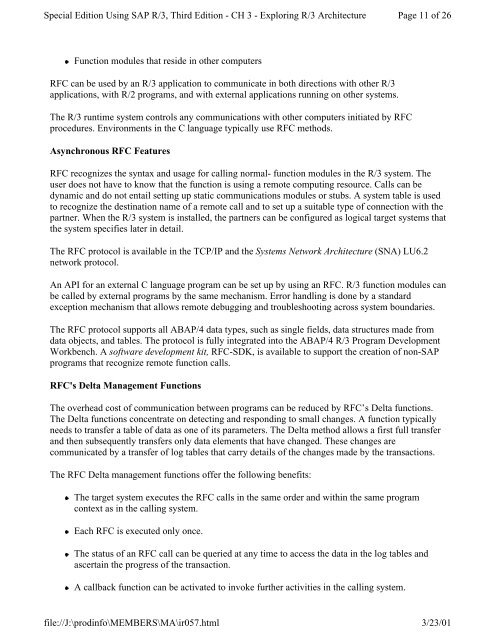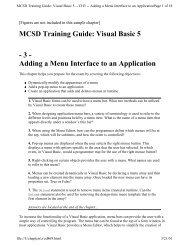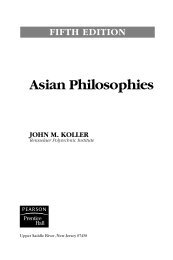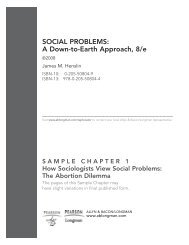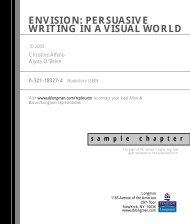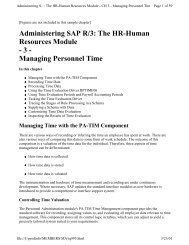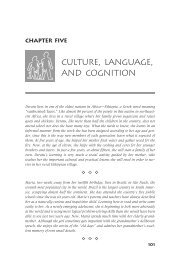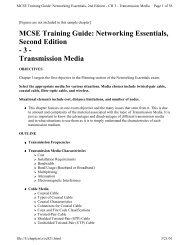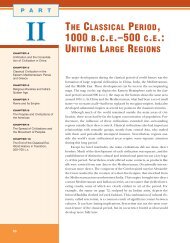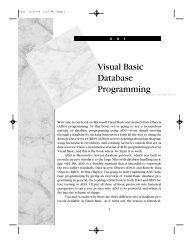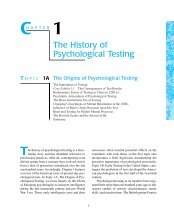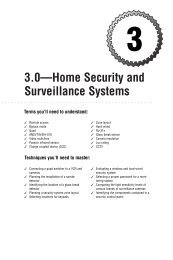Special Edition Using SAP R/3, Third Edition
Special Edition Using SAP R/3, Third Edition
Special Edition Using SAP R/3, Third Edition
Create successful ePaper yourself
Turn your PDF publications into a flip-book with our unique Google optimized e-Paper software.
<strong>Special</strong> <strong>Edition</strong> <strong>Using</strong> <strong>SAP</strong> R/3, <strong>Third</strong> <strong>Edition</strong> - CH 3 - Exploring R/3 Architecture Page 11 of 26<br />
Function modules that reside in other computers<br />
RFC can be used by an R/3 application to communicate in both directions with other R/3<br />
applications, with R/2 programs, and with external applications running on other systems.<br />
The R/3 runtime system controls any communications with other computers initiated by RFC<br />
procedures. Environments in the C language typically use RFC methods.<br />
Asynchronous RFC Features<br />
RFC recognizes the syntax and usage for calling normal- function modules in the R/3 system. The<br />
user does not have to know that the function is using a remote computing resource. Calls can be<br />
dynamic and do not entail setting up static communications modules or stubs. A system table is used<br />
to recognize the destination name of a remote call and to set up a suitable type of connection with the<br />
partner. When the R/3 system is installed, the partners can be configured as logical target systems that<br />
the system specifies later in detail.<br />
The RFC protocol is available in the TCP/IP and the Systems Network Architecture (SNA) LU6.2<br />
network protocol.<br />
An API for an external C language program can be set up by using an RFC. R/3 function modules can<br />
be called by external programs by the same mechanism. Error handling is done by a standard<br />
exception mechanism that allows remote debugging and troubleshooting across system boundaries.<br />
The RFC protocol supports all ABAP/4 data types, such as single fields, data structures made from<br />
data objects, and tables. The protocol is fully integrated into the ABAP/4 R/3 Program Development<br />
Workbench. A software development kit, RFC-SDK, is available to support the creation of non-<strong>SAP</strong><br />
programs that recognize remote function calls.<br />
RFC's Delta Management Functions<br />
The overhead cost of communication between programs can be reduced by RFC’s Delta functions.<br />
The Delta functions concentrate on detecting and responding to small changes. A function typically<br />
needs to transfer a table of data as one of its parameters. The Delta method allows a first full transfer<br />
and then subsequently transfers only data elements that have changed. These changes are<br />
communicated by a transfer of log tables that carry details of the changes made by the transactions.<br />
The RFC Delta management functions offer the following benefits:<br />
The target system executes the RFC calls in the same order and within the same program<br />
context as in the calling system.<br />
Each RFC is executed only once.<br />
The status of an RFC call can be queried at any time to access the data in the log tables and<br />
ascertain the progress of the transaction.<br />
A callback function can be activated to invoke further activities in the calling system.<br />
file://J:\prodinfo\MEMBERS\MA\ir057.html 3/23/01


